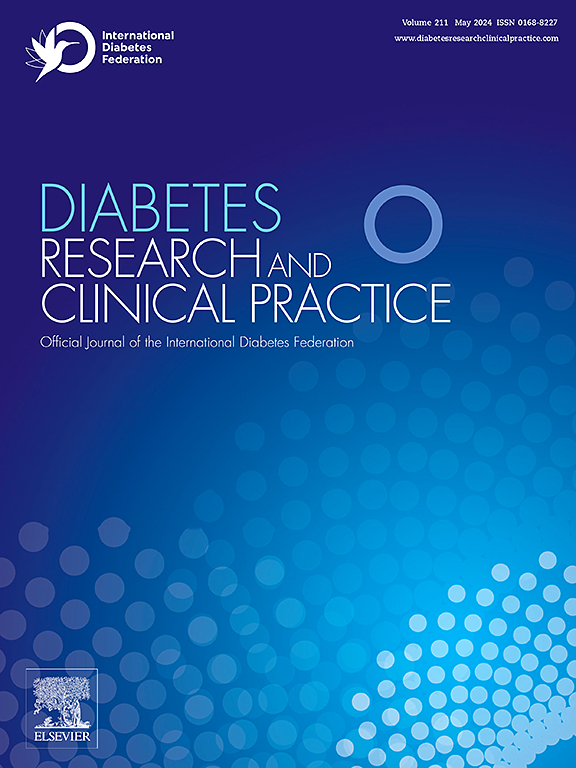Call to action for clinicians in the South-East Asian regions on primary prevention of diabetes in people with prediabetes- A consensus statement
IF 6.1
3区 医学
Q1 ENDOCRINOLOGY & METABOLISM
引用次数: 0
Abstract
Primary prevention of diabetes still remains as an unmet challenge in a real world setting. While, translational programmes have been successful in the developed nations, the prevailing social and economic inequities in the low and middle income countries, fail to integrate diabetes prevention into their public health systems. The resulting exponential increase in the prevalence of diabetes and the cost of treatment has put primary prevention in the back seat. As a call to action, an expert group was formed to lay down practical guidelines for clinicians in the South East Asian regions to implement primary prevention programmes at an individual or at a community level. The guideline was developed based on the outcomes of the evidence based prevention programmes conducted in India. This decentralised self-guided approach for primary prevention of diabetes follows a three step implementation process of screening, diagnosis of intermediate hyperglycaemia and design and delivery of personalized interventions. Recommendations provided on dietary intake and physical activity can be tailored by the clinician to suit individual needs. Initiation of pharmacological treatment to achieve desired targets has also been addressed. A personalised approach by the clinician may be effective and offer a sustainable solution to curb the rising epidemic.
呼吁东南亚地区临床医生对糖尿病前期患者的一级预防采取行动——一项共识声明。
在现实世界中,糖尿病的一级预防仍然是一个未解决的挑战。虽然发达国家的转化规划取得了成功,但低收入和中等收入国家普遍存在的社会和经济不平等,未能将糖尿病预防纳入其公共卫生系统。由此导致的糖尿病患病率和治疗费用呈指数级增长,使初级预防处于次要地位。作为一项行动呼吁,成立了一个专家组,为东南亚区域的临床医生制定实用指南,以便在个人或社区一级实施初级预防规划。该指南是根据在印度开展的循证预防规划的成果制定的。这种分散的糖尿病一级预防自我指导方法遵循筛查、中级高血糖诊断以及设计和提供个性化干预措施的三步实施过程。关于饮食摄入和身体活动的建议可以由临床医生量身定制,以适应个人需求。启动药物治疗,以达到预期的目标也已解决。临床医生的个性化方法可能是有效的,并为遏制不断上升的流行病提供了可持续的解决方案。
本文章由计算机程序翻译,如有差异,请以英文原文为准。
求助全文
约1分钟内获得全文
求助全文
来源期刊

Diabetes research and clinical practice
医学-内分泌学与代谢
CiteScore
10.30
自引率
3.90%
发文量
862
审稿时长
32 days
期刊介绍:
Diabetes Research and Clinical Practice is an international journal for health-care providers and clinically oriented researchers that publishes high-quality original research articles and expert reviews in diabetes and related areas. The role of the journal is to provide a venue for dissemination of knowledge and discussion of topics related to diabetes clinical research and patient care. Topics of focus include translational science, genetics, immunology, nutrition, psychosocial research, epidemiology, prevention, socio-economic research, complications, new treatments, technologies and therapy.
 求助内容:
求助内容: 应助结果提醒方式:
应助结果提醒方式:


